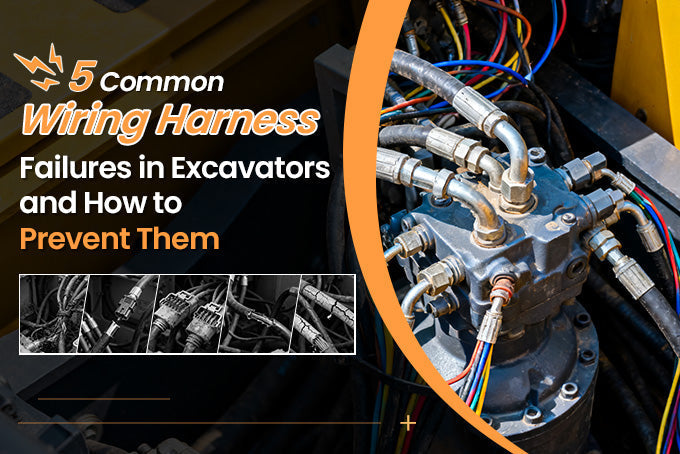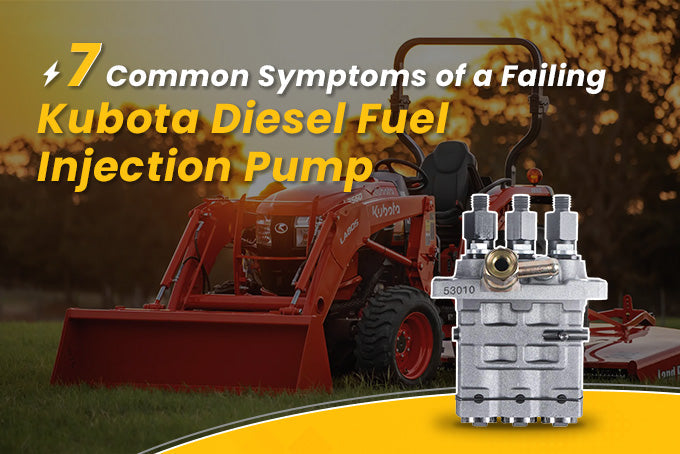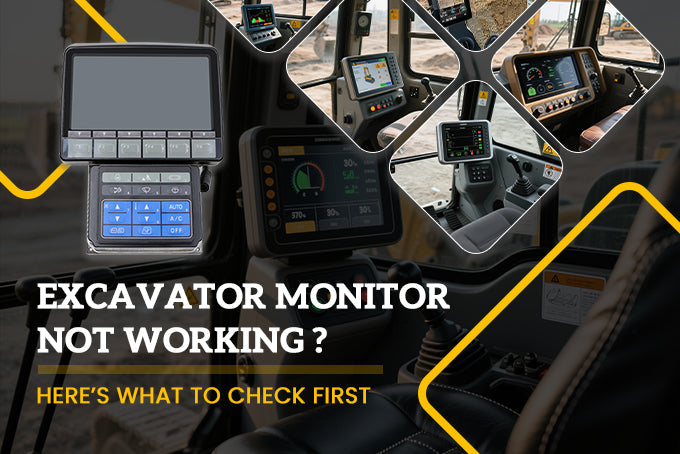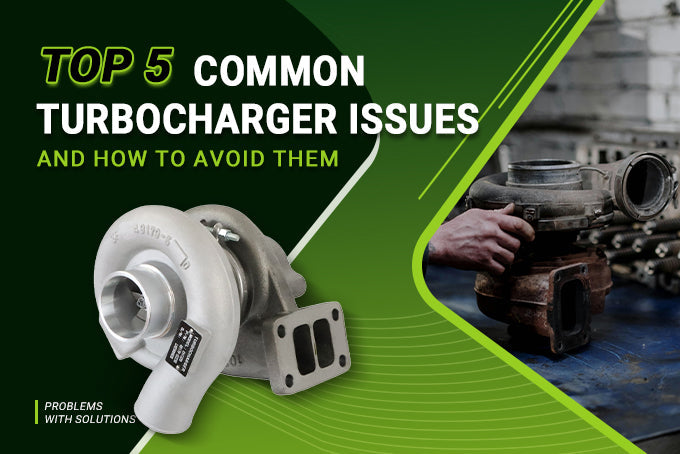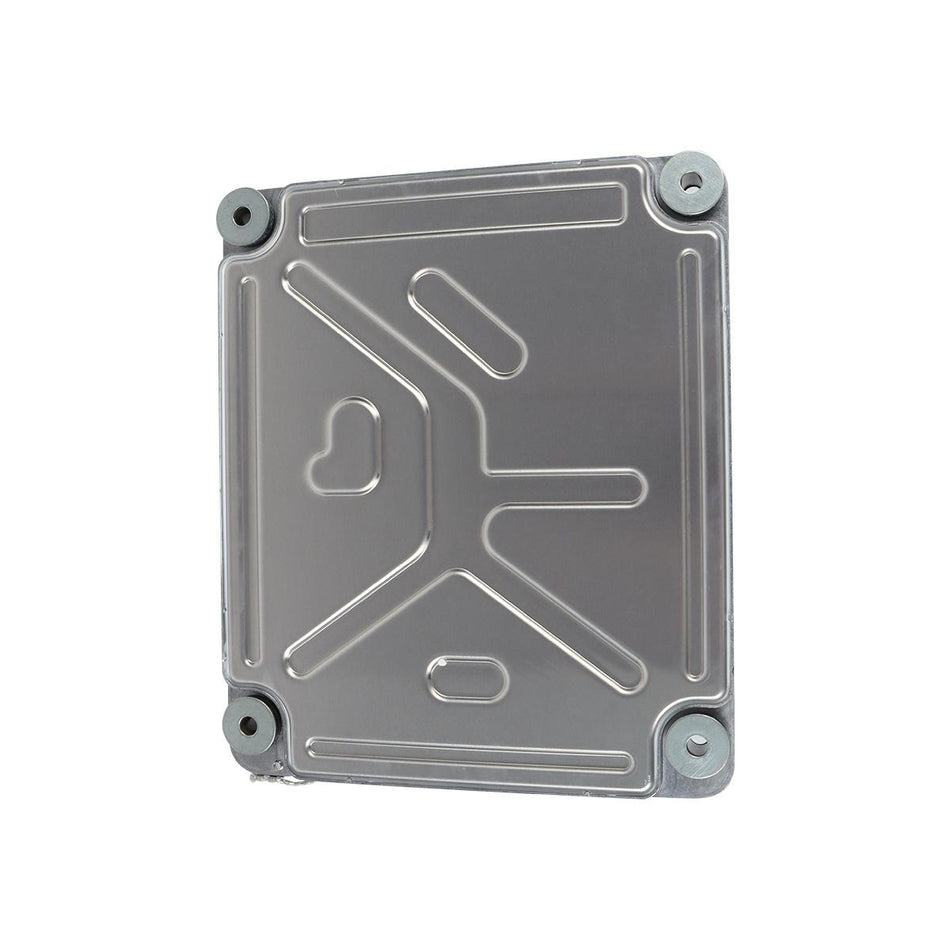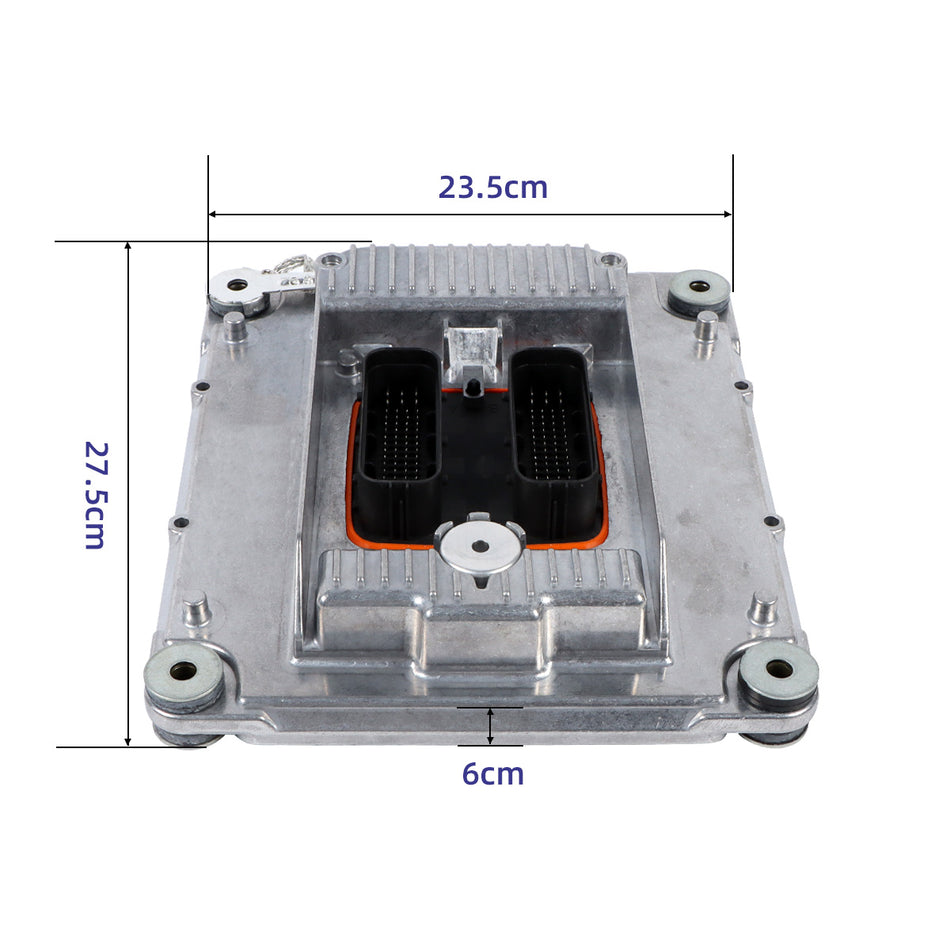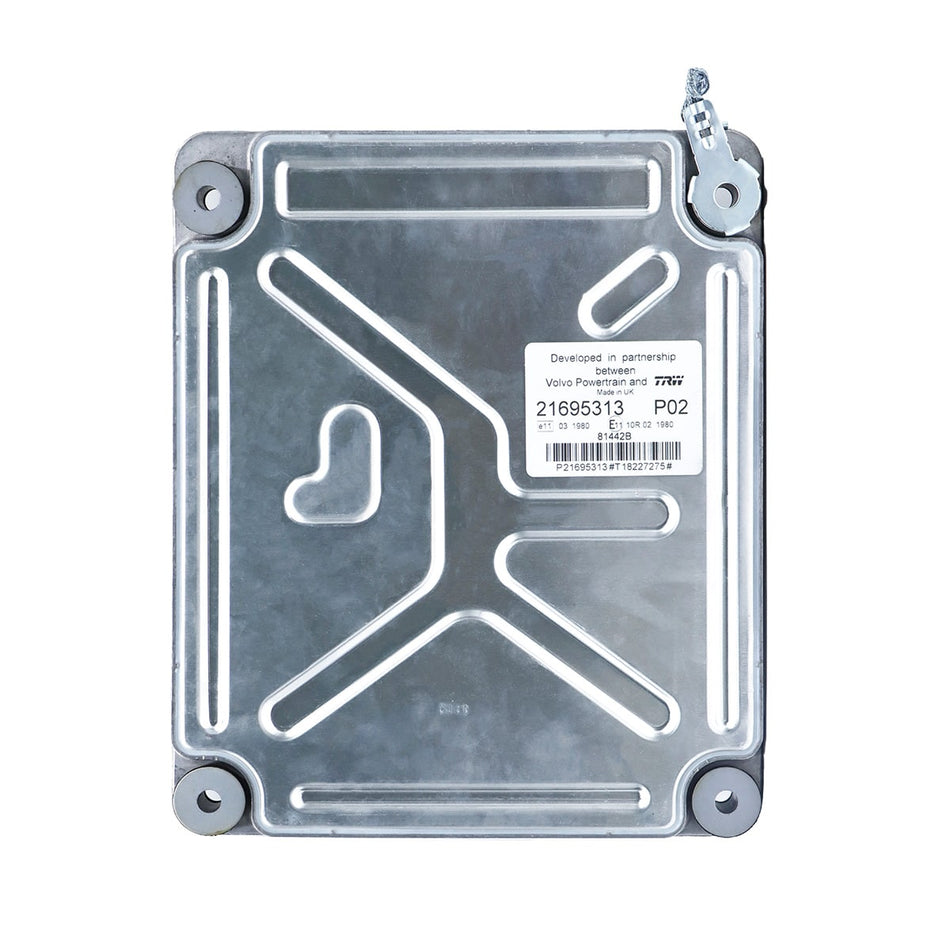Starting from the conditions required for the smooth start of the diesel engine, the reasons for the difficulty of starting the diesel engine are analyzed. In this paper, the single-cylinder engine S195 is used as an example to discuss the fault diagnosis method for the difficulty of starting the engine.
The difficulty of starting a diesel engine is a relatively common comprehensive failure on a diesel engine. The cause of the failure is complex and often occurs in diesel engines that have been used for a period of time. Because after a period of operation of the diesel engine, due to the effects of natural wear and human factors, the technical state will deteriorate and it is prone to start difficulties. Difficult to start means that it can not be started for more than three consecutive times according to the operation of the starting procedure, and even adopts auxiliary means, such as heating the water into the water tank, etc., the diesel engine can not be started, it can be considered that the diesel engine has a difficult start failure.
Conditions required for the smooth start of the diesel engine
The diesel engine can successfully start up must meet the following three conditions, and are indispensable:
01
The inhaled air should form a strong swirling flow. At the end of the compression, the end temperature of the compression should be 200-400°C higher than the self-ignition point of diesel, that is, 500-700°C. If the cylinder or valve leaks, the pressure in the combustion chamber is insufficient, and the temperature and pressure at the end of the compression do not meet the requirements, which will cause the diesel to fail to burn normally and prevent the diesel engine from starting.
02
Inject fine atomized diesel into the combustion chamber at high pressure at the right time. The structure of the fuel system is complicated and the parts are precise. Once a failure occurs in a certain part in the middle, it will cause abnormal fuel supply, which will cause difficulties in starting or failure of the diesel engine.
03
The rotation speed of the crankshaft is higher than 110 r/min. If the starter's starter power is insufficient and the work is not normal, the crankshaft speed below 110 r/min will directly affect the normal start of the diesel engine.
Start speed is too low:
01
The air vortex is weak, the mixing of fuel and air becomes worse, the temperature in the cylinder drops, the fuel is not easy to evaporate, and the ignition conditions are not met;
02
The fuel injection pressure is low, the fuel injection quality is deteriorated, the fuel injection quantity is significantly reduced, and the fuel supply quantity required for starting is not reached;
03
Compressed gas is easy to leak through the tight seal of its cylinder, causing the temperature and pressure of the end point of compression to decrease, thus making it difficult to start the diesel engine. In addition, the low ambient temperature and the failure of the lubrication system lead to poor lubrication of the coordination motion pair, resulting in increased motion resistance of the crank connecting rod mechanism, difficulty in crankshaft rotation, and difficulty in starting the diesel engine.
From the above analysis, it can be seen that the main fault parts that cause difficulties in starting the diesel engine are the compression system and the fuel supply system; the secondary fault parts include the lubrication system and the starting device; and the influence of environmental conditions. When we encounter difficulties in starting a diesel engine, as long as we carefully look up the diagnosis from these aspects and eliminate them one by one, we can definitely restore the good starting performance of the diesel engine.
Causes of difficulty in starting diesel engines:
01
Compression system failure. The main reason is that the pressure at the end of the cylinder's compression does not reach the specified value, and the mixture in the cylinder cannot be ignited and burned normally. This is mainly due to intake and exhaust valve wear, carbon deposits, incorrect valve clearance adjustment, etc., resulting in inadequate valve closing and leakage, or the wear gap between the piston ring and the piston and cylinder liner is too large, making the combustion chamber sealed Good and leaky.
02
The fuel supply system is malfunctioning. It can be analyzed according to the two parts of low-pressure oil circuit and high-pressure oil circuit. Low-pressure oil circuit failures include: insufficient oil in the fuel tank or the fuel tank switch is not turned on, there is air or water in the oil circuit; the air vent of the fuel tank cap is blocked; the oil circuit or the diesel filter is blocked and no oil is supplied; the filter of the fuel pump is blocked; The oil valve of the oil transfer pump is sticky or not sealed; the upper oil pipe in the fuel tank is cracked or loose; the oil transfer pump is connected to the oil pipe to lock the nut intake; the oil pump is not working well. High-pressure oil circuit failures include: the wear of the plunger and sleeve of the fuel injection pump exceeds the limit; the tight seat of the fuel delivery valve is loose, viscous, oil leaking or its spring is broken; the throttle lever or plunger stays in the non-fuel supply position; the fuel injector Needle valve carbon deposits or sintering stuck; less fuel injection, low pressure and poor atomization; nozzle clogging; pressure regulating spring adjustment is too tight or has been broken; high-pressure fuel pipe rupture, loose joints or air in the pipe.
03
Failure of the starting system and electrical system. Mainly poor circuit contact, manifested as loose connectors; insufficient battery power, starter motor power drops; poor contact between starter motor carbon brush and commutator or too weak spring force of carbon brush holder spring; severely worn starter motor carbon brush; starter motor gear cannot be embedded The human flywheel ring gears mesh with each other.
04
The lubrication system is faulty. There is air in the oil circuit; the oil collecting filter is clogged; the oil filter is clogged; the oil pump oil pressure is low or the oil supply is insufficient; the pressure oil pipeline and oil passage are blocked or leaking.
05
Others. The air filter is seriously clogged, making the cylinder unable to suck in air; the cylinder head exhaust passage or exhaust pipe is blocked, which makes the exhaust resistance too large; the startup hole on the vortex chamber block is blocked.
Fault diagnosis (take single cylinder 5195 as an example)
06
Turn off the throttle, hit the decompression, and shake the handle to quickly rotate the flywheel. If the flywheel rotates slowly, laboriously, and has a sense of retardation, it indicates that there are too many oil impurities, too thick, or the gap between the connecting rod shoe and the main bearing shoe is too small. If the flywheel rotates freely, easily, and with inertia, it indicates that the clearance of each fit is normal. If there is a "click, click" horseshoe sound or a piston knocking sound, it is mostly because the tightening nut on the rocker shaft seat is loose, and the valve clearance is wrong.
07
Turn off the throttle without decompression, shake the handle and slowly rotate the flywheel. When feeling heavy, take out the handle, change direction, and then decompress with both hands. If the flywheel does not rotate, it indicates that the valve is holding well, and there is no air leakage at the cylinder gasket and the copper gasket of the injector; if the flywheel rotates freely and effortlessly, the cylinder head emits a "chirp, chucking" sound, indicating that the valve is leaking. A small amount of engine oil is lubricated by the intake pipe to lubricate the valve. At the same time, the oil pan is drained of oil. Open the rear cover of the body and rotate the flywheel with the rocker handle. If the cylinder liner and the skirt of the piston leak, there will be a misty air flow.
08
Open the throttle and decompress. If you hear the sound of "Pu, Pu" when you start it, the exhaust pipe continues to emit thick smoke, indicating that the oil path is smooth and the fuel supply is normal; if the fuel injection sound is weak, the exhaust pipe emits blue smoke, which is mostly a spray Poor atomization of the oiler, wear of the plunger of the oil pump, and weak pump oil; if the exhaust pipe emits white smoke, it is mostly due to the wrong oil supply time or no oil supply. The reasons are: wrong marking of diesel in winter, oil condensation, clogging of the oil pump outlet valve, clogging of the air filter, clogging of small holes in the starting block of the vortex chamber.
09
Hot car ignition. If the diesel engine starts hot, it needs to be ignited multiple times, which indicates that the fuel pump advance angle error is large, the fuel injection atomization is bad, the pump plunger sleeve is seriously worn, and the compression ratio is insufficient (air valve, piston ring, cylinder gasket leakage, valve seat) The amount of sag exceeds the specified value, the piston wears, and the cylinder liner is out of round). It indicates that the technical condition of the diesel engine is poor, the fuel consumption rate is large, and the power is small, and it should be repaired in time.








